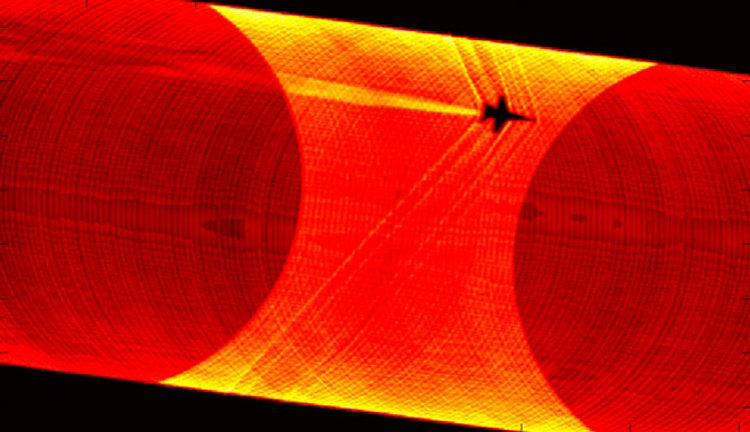Sun Distorted by Jets' Supersonic Shockwaves (Video)


A stunning video shows how sonic-boom shockwaves distort the edge of the sun.
The new shockwave video is not an art project but rather the work of scientists at NASA's Dryden Flight Research Center in California, who aim to reduce the intensity of aircraft sonic booms and thereby make commercial supersonic flight over land more feasible.
The researchers sent superfast jets flying across the sun's face, then used special cameras to photograph the disortion of the sun's edge caused by the vehicles' shockwaves. (This distortion results from a density change; the same principle makes it appear as if a straw in a glass of water is in two different positions, one above the water and one beneath it, researchers said.)
These NASA jets are fast, obviously — faster than the speed of sound, which is about 761 mph (1,225 km/h) at sea level. But engineers have developed much zippier aircraft over the years. You can check out a new countdown of history's fastest military airplanes over at SPACE.com sister site LiveScience.com.
Follow Mike Wall on Twitter @michaeldwall and Google+. Follow us @Spacedotcom, Facebook or Google+. Originally published on SPACE.com.
Breaking space news, the latest updates on rocket launches, skywatching events and more!

Michael Wall is a Senior Space Writer with Space.com and joined the team in 2010. He primarily covers exoplanets, spaceflight and military space, but has been known to dabble in the space art beat. His book about the search for alien life, "Out There," was published on Nov. 13, 2018. Before becoming a science writer, Michael worked as a herpetologist and wildlife biologist. He has a Ph.D. in evolutionary biology from the University of Sydney, Australia, a bachelor's degree from the University of Arizona, and a graduate certificate in science writing from the University of California, Santa Cruz. To find out what his latest project is, you can follow Michael on Twitter.
